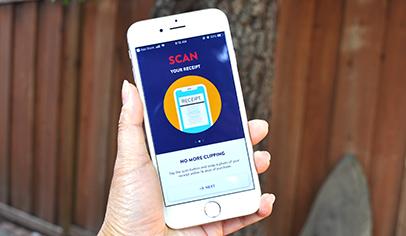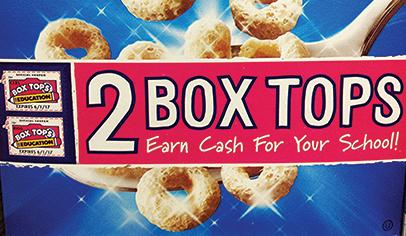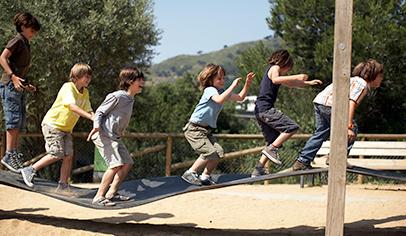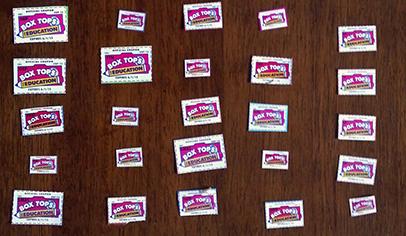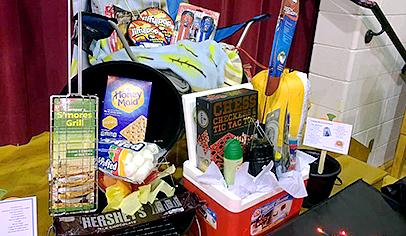Russ Townsend is a good sport. The 6th grade teacher from Aberdeen, S.D., found himself duct-taped to the cafeteria wall for two hours after students at Simmons Middle School reached their Campbell's Labels for Education fundraising goal.
After months of collecting, the help of dozens of students and several teachers, and five full rolls of duct tape, the labels program was complete. The glowing newspaper reports of the celebration talked about how Simmons would now be able to get computer software, playground equipment, and other items from the program for the school.
Likewise, at schools across the country, classroom contests, themed collection sheets and “Box Top Ladies” abound as PTOs and PTAs try to take advantage of an ever-increasing number of “collection” programs that have consumer marketers rewarding schools for saving UPC symbols, labels, receipts, or box-top logos. The little known fact, though, is that for all of that work, there’s a huge variance in the typical results earned from these programs. Results can and do vary, and several program are simply bad deals for groups. While all the programs are marketed as “free,” that name discounts the labor and attention and even postage costs that groups must spend to run the programs.
The bad news: Thousands of groups simply run any and all free programs based on a “What do we have to lose?” philosophy. The good news: Several of the most sophisticated and well-known of these programs have been improving steadily, and groups are seeing some significant returns.
How can you tell which programs should make your cut? What follows is PTO Today's detailed rundown on the most popular programs, a description of how we assess each one, our exclusive program grades, and some tips for matching your school to the best programs for you.
A Growing Tradition
Campbell’s Labels for Education is the oldest of the many collection programs available to schools. Founded in 1973, it has returned more than $100 million worth of equipment to schools nationwide. And Campbell’s deserves praise for the spirit of the program. Here at PTO Today, we love companies that give back to schools. Remember, all of these companies could choose to run another 30-second ad or throw one of the corporate world’s infamous million-dollar birthday parties.
Done well, these programs can be models of successful school/business partnerships, where companies support schools and in return gain recognition and marketing support as good corporate citizens. It’s a concept known as cause marketing, and more and more companies now understand that connecting their brands to a worthwhile effort like helping schools can be win-win for all involved.
But tradition and good intentions are no longer enough in a landscape dotted with competitive cause marketing programs and in a world where parent groups have to fight for the attention of average parents. Today, parent groups need to use a critical eye when determining which programs are right for their school.
It’s worthwhile to compare Campbell’s progress to the progress of General Mills much younger Box Tops for Education program. The cereal giant has returned roughly $200 million to schools in just 10 years and has raised the bar on the kind of coordinator tools and marketing support that can make a program much easier to run and more successful. All programs are not created equal.
With a nod toward the Campbell’s tradition and an envious look at the sudden success of Box Tops, more and more marketers have entered the fray in recent years. Read on for details of traditional clip-and-save offerings from Tyson, Advance Brands, and Best Choice, as well as similar options from some of the nation’s largest grocers and shopping mall chains.
Too Much of a Good Thing
We hear often that all free money is good money and that in this day of ever-tightening school budgets, schools shouldn’t turn down even a single dollar. We disagree. Running too many programs or running the wrong programs can do real harm to your school. Let’s look at three ways this can happen.
-
Fundraising Overkill. Has your group ever been accused of being nothing more than a fundraising machine? And does this turn off some parents? Sending out flyers and adding paragraphs to your newsletter about every program under the sun can really exacerbate this reputation. Is it worth turning off 25 percent of your parents for $25?
-
Loss of Valuable Volunteers. Volunteers are so hard to come by; you should make every effort to find valuable, worthwhile work for willing parents. We can think of a thousand better uses for a volunteer’s time—how about reading books to children or creating bulletin board decorations at home?—than cutting, clipping, sorting, counting, and shipping for one piece of software or five playground balls. Even if you make $60 or $100 in Campbell’s earnings after a full year of work, is that enough relative to the volunteer time committed? Could you have used that volunteer more wisely?
-
Attention Loss. The average parents at your school are a busy lot—you know this already. They read and really take in maybe half of the messages your group sends out. Every less important message you send reduces the likelihood of your more important messages hitting home. Every newsletter paragraph devoted to a weak program takes attention away from a parent involvement message or even from a much better fundraiser. Attention spent on a poor program can mean fewer attendees at an involvement event or lower profits on a more worthwhile fundraiser. Is it worth it? No.
Rating the Programs
When we first rated the free money or collecting programs in 1999, we described our exclusive ratings formula called the Work-Reward Equation. Basically, we looked at how much work it took to run a certain program well relative to the amount of reward your group could expect to receive from the program. Low work, high reward equals great program. High work, low reward equals poor program.
In the years since, we’ve added a third piece to the formula: attention. The added measure in the Work-Reward-Attention Equation takes into account how much of the promotional work is done for you by the sponsoring company.
General Mills, for example, promotes the Box Tops program prominently on hundreds of millions of very popular packages. It’s hard for a parent to miss, and even with no work from your group, you’re likely to see Box Tops piling up at the school office. Campbell’s, too, makes a strong effort to get its program front and center for consumers through product tagging and consumer advertising.
But look at a program like Advance Brands Home Team School Rewards, with far fewer eligible products and virtually no marketing support. If you have any intention of making this program work, the entire promotional burden will fall to your group. You would have to be a fundraising miracle worker to see any significant returns. Remember, every promotion you send out means that more important messages may get lost in the clutter.
This third piece of the equation is a killer for programs like Advance Brands that don’t have an extensive product list or high brand recognition. In effect your group, through your own communications with parents, is asked to make up for what those brands lack in profile. Not a good deal.
The Scorecard
Box Tops for Education: A
The Company: General Mills
The Offer: 10 cents per participating Box Top. Hundreds of products. High annual limits.
The Skinny: These guys have truly figured this stuff out over the past decade. The best coordinator materials by far. New, strong brands each year. Heavy promotional support through product tagging and consumer advertising. More and more groups making significant dollars ($1,000-plus). They’ve now even invited non-GM brands (Kleenex, Ziploc) into the mix. The best of the bunch by far.
Grocery Store Receipts: A
The Offer: Varies by grocer, often 1 percent of receipts.
The Skinny: These programs are almost always worthwhile, simply because parents spend so much money at the grocery store. Even a very small percentage return can add up to big dollars. More and more grocers are connecting these programs to frequent shopper cards (or connecting with credit cards like eScrip), reducing coordinator work even further. One bad trend: It seems that some grocers are looking to limit their payouts by capping school earnings or, worse yet, by pitting schools against schools for a percentage of a set pot of earnings. For stores where schools must compete, the grade drops to a B.
Mall Receipts: C
The Offer: Schools compete. The school with the highest dollar value of receipts collected wins first place. Competing schools split a set pot, often $3,000 to $10,000. First place gets most of the money, while lower performers get a nominal amount or nothing at all.
The Skinny: These programs are often much better for the malls than the schools, with some exceptions. If the mall limits the number of participating schools and you can get a slot, go for it. If an unlimited number of schools are allowed to participate, don’t bother. You’ve got better ways to spend your time (and attention!) than on the possibility of maybe a nice reward. Better to buy a lottery ticket. If your school has better than average support—your Box Tops program always excels, for example—then you’re likely to fare well in a mall program, too. If you struggle with support in other endeavors, then a mall program could be an exercise in frustration with no guaranteed pay-out.
Project A+: C-
The Company: Tyson
The Offer: 24 cents per participating UPC. $12,000 limit per calendar year.
The Skinny: A valiant effort and a generous offer, but it doesn’t seem to be catching on. The limited product selection—compare the number of eligible UPCs from Campbell’s or Box Tops to Tyson—seems to be the problem. Perhaps Tyson could partner with another brand to expand options. We hope so; that would definitely help. In the meantime, this program is too limited to earn a higher grade.
Save-A-Label: D
The Company: Best Choice
The Offer: $30 in cash for each 1,000 UPCs you redeem—3 cents per UPC, must be submitted in batches of 1,000.
The Skinny: Best Choice is the store brand at a whole host of groceries and thus has quite a few eligible products. The 3 cent return and the program-slanted (as opposed to school-slanted) rules are hard to get past. If your local grocer is promoting this really loudly, it might be worth it. Very few are. If Best Choice got serious about the program and really got grocer partners involved, there could be something here. Right now, that’s simply not happening.
Labels for Education: C+
The Company: Campbell’s
The Offer: 1 “point” or 5 “points” depending on product. Points roughly equate to a penny.
The Skinny: Campbell’s has made considerable strides in recent years, both in its coordinator tools and—most important—in its reward financials. Bumping label value on many common products (and this program boasts some of the most common family brands on the shelves) from a penny to a nickel may sound small, but it can make a big difference in returns. With a can of soup still less than a dollar, many labels will likely stay at a penny for the long term, but the addition of higher-value items to the program (and the resulting redemption-value increase) is making a positive difference.
Home Team School Rewards: C-
The Company: Advance Brands
The Offer: Clip Home Team logo from eligible product bags; earn 30 cents per logo. Minimum 100 logos per submission.
The Skinny: Another program that significantly enhanced its financials in recent years. Redemption value leaped from 10 cents each to 30 cents each, moving this program from failing (its first grade was an F) to a Gentleman’s C. Biggest trick is that it’s still just one company and it’s still basically just chicken (not exactly a daily purchase). Coordinator tools still leave much to be desired.
Clip-and-Save Success
by Craig Bystrynski
Every November, Alabama becomes a house divided. Friend against friend. Husband against wife. Brother vs. brother. The source of all of this strife? The annual Iron Bowl football game. It pits two big state colleges against each other: Auburn University and the University of Alabama.
“Living here, it’s inbred,” says Gwen Lindsley, the Box Tops for Education program coordinator for Mountain Gap Elementary PTA in Huntsville. “You have to pick either one or the other, and everybody goes all out” to support their team.
Lindsley helps them do just that. Every fall, she puts together a monthlong Box Tops contest running up to the big game. The 400 kids at the K-5 school vote for their favorite team by placing Box Tops in decorated bins—one for Auburn and one for ‘Bama. Every day she uses the school intercom to announce which team is ahead. Every day kids bring more Box Tops. During the contest last fall, the PTA collected 3,000 in all, worth $300 to the group from General Mills.
Such creativity has helped make Mountain Gap Elementary’s Box Tops program number two in the state. Three years ago, the PTA earned $100 collecting Box Tops. Two years ago, Lindsley’s first as coordinator, they earned $700. Last year, they boosted their earnings to $2,600 by collecting 26,000 Box Tops.
Lindsley runs three basic promotions.
- Monthly contests in which kids compete for prizes. She describes the prizes, donated by local businesses, as odds and ends. They range from bumper stickers from local radio stations to movie coupons to hockey sticks and basketballs donated by local minor league sports teams.
- Two competitions during the year: Auburn vs. Alabama in November and boys against girls in January or February.
- Promotions with supermarkets. The group collected 1,400 Box Tops from 5 to 8 p.m. on a Monday at a local Bruno’s grocery store. The store matched the collection with a donation to the parent group of $140.
Any child who submits 50 Box Tops during the year receives a prize. The top room for the year wins a pizza party. At the end of the year, each student is given a Ziploc bag labeled with the child’s name and the new teacher’s name. A product list is attached. The bag reminds kids to collect during the summer and gives them a specific spot to save Box Tops all year. When a child has collected some Box Tops, he brings his bag to a collection box in the school office. The Box Tops are then counted, and the bag is returned to the child to be refilled.
The secret to success with a clip-and-save program like Box Tops, says Lindsley, is to “promote, promote, promote.” She makes in-school announcements every day while contests are running, she runs notices in the group newsletter, she places items in the local newspaper to announce supermarket nights, and the local paper has even written a feature about her program.
“The parents seem to respond to the fact that it's an easy fundraiser. The kids seem to respond more to the contests,” she says. For Box Tops specifically, she stresses the high value of the Box Tops, 10 cents apiece, and the significant amount of money the school can raise.
There's one more key to success, she says: Lots of reminders.












